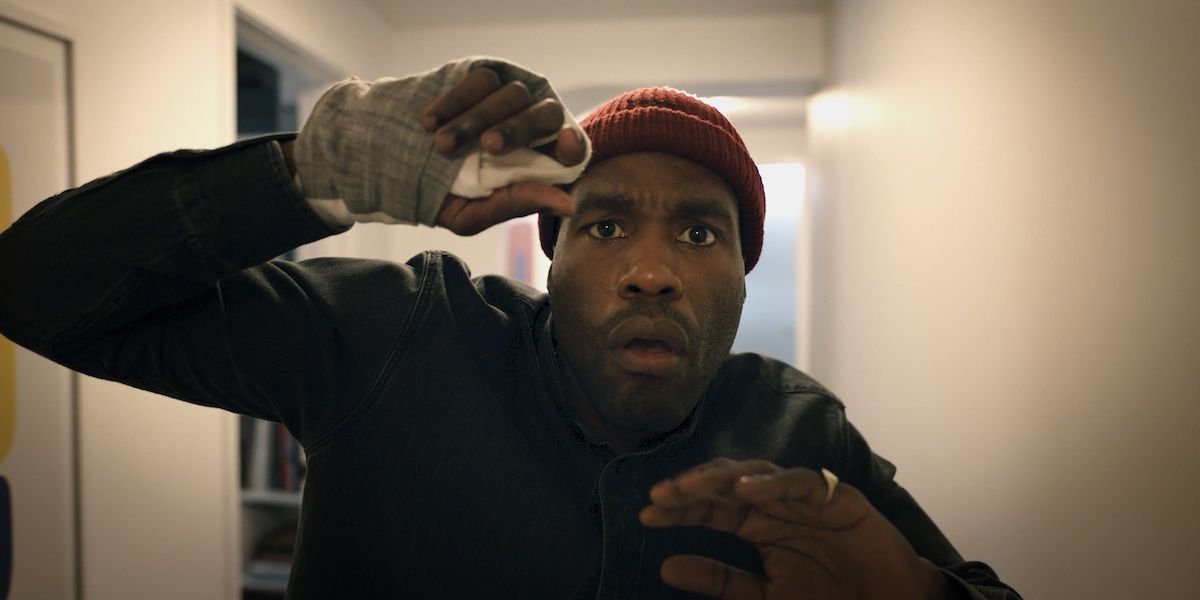Candyman Review: Nia DaCosta’s Take On The Horror Legend Is So Tense, It’s Numbing

The most terrifying big screen tales of horror have always been rooted in real fears, and when 1992’s Candyman came out, it projected a terrifying tale inspired by housing projects in the United States, taking place in Chicago’s Cabrini-Green development. While the scene of the modern folklore of the original film may have been torn down a decade ago, as the new Candyman illustrates, the legend is just as piercing even over layers of buried embers.
Filmmakers Nia DaCosta and Jordan Peele have orchestrated an unnerving continuation of the Candyman legend. This film finally heightens the themes of the story with a sobering and introspective update the horror folklore was in long need of. Yet with that comes a movie that is also incredibly cerebral and therefore wrapped up in its thoughts rather than yielding the fully-realized spiritual sequel for the franchise fans might be expecting.
Candyman follows a couple who is settling in on Cabrini-Green property in its new form, now a fresh and upscale loft condo in a Chicago community that has since been gentrified. Watchmen’s Yayha Abdul-Mateen II plays rough-around-the-edges visual artist Anthony McCoy and WandaVision’s Teyonah Parris is a respected art gallery director Brianna Cartwright. While having their first guests over, they are told the story of Candyman, and Anthony becomes obsessed with digging deeper into the legend.
Nia DaCosta’s direction is superb and highly effective alongside a knockout cast.
Director Nia DaCosta brings in the intriguing voice she introduced on her first film, 2019’s Little Woods, into a slow-burn horror film that is understated, yet incredibly distinct. She guides the audience to the reflections in the mirrors as the story of Candyman gradually creeps under one’s skin. Her Candyman is patient in how it unfolds and often surrealist. Abdul-Mateen II takes a gentle hand to his increasingly troubled character, and Colman Domingo delivers a standout performance as a former Cabrini-Green resident with tall tales to tell. Delicate shadow-puppetry wistfully connects the original to the present day in a precisely eerie way that makes this Candyman movie feel like a true and distant memory to be unlocked rather than lore dumping audiences.
Candyman views the legend through a modern lens in a captivating way.
When 1992’s Candyman was originally told, it was through the eyes of a white woman, Helen Lyle, who was inspired and intrigued by Candyman, came to know him, and eventually became a part of the legend herself. But 2021’s Candyman aligns its point of view with a deep-seated and more multifaceted definition of what the Candyman is. He’s a stark symbol of generational trauma that Black Americans and the country as a whole suffers in different ways due to the racist and troubled history of the land we stand on.
As robust and attractive Cabrini-Green’s replacement housing is, the legend of Candyman cannot be contained for long because it continues to lie in the fabric of the people who grew up there, even if it's not always called upon. It’s through that access point that Candyman becomes a horrifyingly powerful movie about how we process and come to terms with personal and collective pain. Just like the modern development of the legend, we cannot simply bury it deep in the Earth and expect it to mend itself without facing it. Through this context, Candyman becomes an even more vicious monster because he is truly a recurring product of our society – a society where we’re more self aware of the complexities of these demons, and one that can feel revised in our personal bubbles until a horrific event lurks back into the sphere to remind us there’s a lot more we’ve yet to heal from as a whole and within ourselves.
There’s something perplexing and empty about the way Candyman unfolds.
The most nerve-racking element of Candyman is how subdued it is. For all its terror and scares, it’s also paralyzed in delivering honesty. It may be folklore, but the story walks a line of nearly convincing its audience that they’re watching a drama rather than a movie rooted in a long-beloved horror franchise. There’s a lack of adrenaline or fanfare to Candyman that feels guided by its theming and showcasing a movie as disturbed as its story, which can feel anti-climactic in a sense.
Your Daily Blend of Entertainment News
At its best, but through a frame of restlessness, Candyman is meant to sit with you. It's meant to creep behind you as you stare into your own reflection and examine the truth being brought to the audience’s attention that we know, but rarely want to remind ourselves. Nia DaCosta affirms her style and proves herself a distinct director who wants to reach out and feel the story being told through every element of her filmmaking. The price of this is a frigid feeling, and perhaps somewhat lethargic in how we look at the legend of Candyman today.

Sarah El-Mahmoud has been with CinemaBlend since 2018 after graduating from Cal State Fullerton with a degree in Journalism. In college, she was the Managing Editor of the award-winning college paper, The Daily Titan, where she specialized in writing/editing long-form features, profiles and arts & entertainment coverage, including her first run-in with movie reporting, with a phone interview with Guillermo del Toro for Best Picture winner, The Shape of Water. Now she's into covering YA television and movies, and plenty of horror. Word webslinger. All her writing should be read in Sarah Connor’s Terminator 2 voice over.
